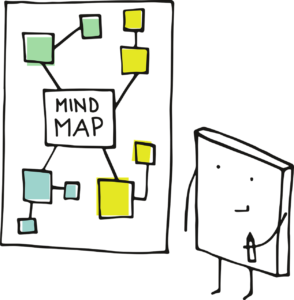Just as a human being goes through certain life-cycle stages from birth to death, a person also goes through many stages in his career by joining an institution. Seen from this angle, there are five stages that every person goes through during his career.
So you are the lucky one, if you have already gone through this Process successfully. if you are a beginner so we also congratulate you, and go ahead in your career very successfully,5 stages that Individuals experience throughout their professional journey-Why?, In this article, we are giving so much useful information. which will definitely put more stars in your professional career.
Success is often achieved by those who don’t know that failure is inevitable–Coco Chanel

1. Investigative Step
As the term itself suggests, this is a stage in which a person explores potential career options for himself and this is usually in the mid-twentieth century when a person works to earn a transition from education. Experience suggests that many factors such as parents’ careers, their interests, their aspirations for their children, and their financial resources shape children’s future career choices. Since this phase precedes employment, its relevance to the organization is minimal.
2. Exploration stage
This stage begins with choosing a job for yourself or, say, a career. This phase is marked by first-hand experiences on the job, acceptance, and evaluation by peer groups. In this stage, the person tries to create his own identity and makes mistakes in the process, learns from the mistakes, and gradually increases the responsibilities. However, no one reaches peak or peak Productivity at this stage. Putting it differently, this state is turbulent, putting in a lot of effort, and spending a lot of time and energy.
3. Mid-career stage
It’s a platform that’s been marked with Improved functionality, level closure, or malfunction. It’s a situation where someone isn’t seen as an apprentice. Therefore, mistakes are taken seriously and harsh penalties are invited.
At this stage of a career, a person reaches a stage in his career and is expected to move on. For many people, it’s time to reassess, change jobs, adjust priorities, or follow an alternative lifestyle. In one case, at the age of 40, an officer went into journalism and was fairly successful. Many such cases of the career movement have taken root in society.
4. Late career phase
This phase is generally a pleasant phase for those who continued to grow during the mid-career phase. Based on one’s good performance during the first phase, now the elders play the role of politicians, and respect is given by junior and young employees. During this phase, people do not have to learn but suggest and teach others how to get into their jobs.
But, for those who have either stagnated or deteriorated during the mid-career phase, the late-career phase brings to them the reality that they are no longer required in the organization and, therefore, they should direct themselves to retire.
5. Decline phase
Professional Journey to Decline Phase, It is the final stage of one’s career to retire from one’s job or career. Impressing retirement scares everyone but even more so those who have a career sparkle. This is because these individuals have to live out of bounds and give up a key component of their identity. In contrast, the phase of decline is less painful for minor performers or failures. Their frustration with work is left behind.
Overall, the decline phase is a difficult phase for anyone to face. Nonetheless, some plans for retirement can ensure a smooth transition from working life to retirement life. , In the US many organizations have started conducting training programs for their retired employees. For example, The Senior Community Service Employment Program (SCSEP) is a community service and work-based job training program for older Americans. Authorized by the Older Americans Act, the program provides training for low-income, unemployed seniors. Participants also have access to employment assistance through American Job Centers.
SCSEP participants gain work experience in a variety of community service activities at non-profit and public facilities, including schools, hospitals, day-care centers, and senior centers. The program provides over 40 million community service hours to public and non-profit agencies, allowing them to enhance and provide needed services. Participants work an average of 20 hours a week and are paid the highest federal, state, or local minimum wage. This training serves as a bridge to unsubsidized employment opportunities for participants.
Participants must be at least 55, unemployed, and have a family income of no more than 125% of the federal poverty level. Enrollment priority is given to veterans and qualified spouses, then to individuals who are over 65, have a disability, have low literacy skills or limited English proficiency, reside in a rural area, are homeless or at risk of homelessness, have low employment prospects, or have failed to find employment after using services through the American Job Center system.
SCSEP grantees include state agencies and 19 national non-profit organizations. For more information on SCSEP programs in your area, use Careeronestop’s Older Worker Program Finder or call the toll-free helpline at 1-877-US2-JOBS (1-877-872-5627).
Watch the Video:
How Starbucks Became a $100B Success Story
Let’s Dive into the Conclusion,
We positively conclude here about the “5 stages that Individuals experience throughout their professional journey-Why?” We think you must have understood about our title-Why? right now , In conclusion, the article highlights the five stages that individuals typically experience throughout their professional journey. Starting with the investigative step where career options are explored, to the exploration stage characterized by trial and error, the mid-career stage where growth and change are crucial, the late-career phase where experience is valued, and finally, the decline phase leading to retirement. Each stage brings its own challenges and opportunities for personal and professional development.
It is important to remember that everyone’s career path is unique, and progression through these stages may vary. Nevertheless, understanding these stages can provide valuable insights and help individuals navigate their professional journeys with greater clarity and purpose.
We hope that this article has provided you with useful information that will support your career aspirations and contribute to your overall success. Remember that each stage presents opportunities for growth and learning, and it’s never too late to reassess your goals, make necessary adjustments, and continue striving for excellence. Best of luck on your professional journey, and may you achieve great success in all your endeavors..!!
Also Read This : How to Overcome Anxiety and Live a Stress-Free Life: 10 Secrets








